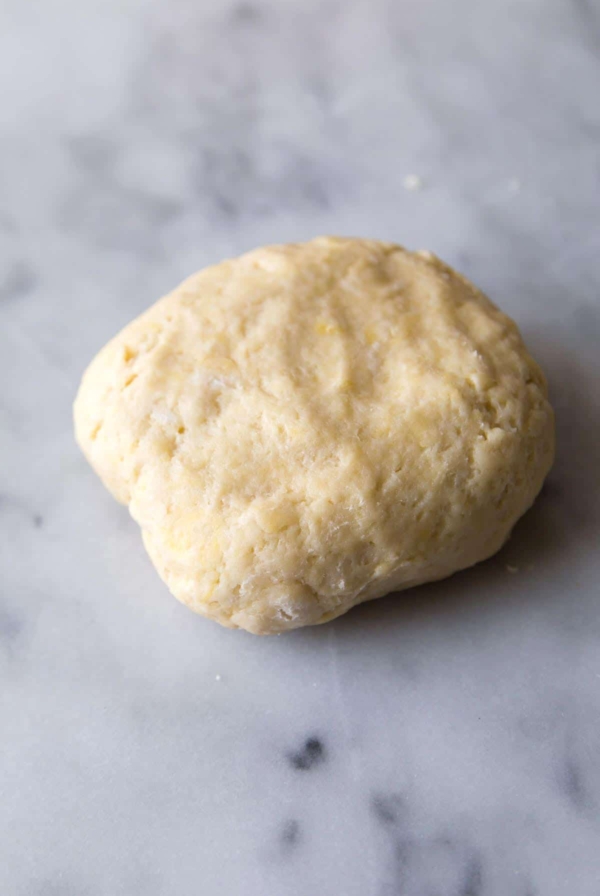A beginner’s guide to baking with yeast. This comprehensive tutorial will help you understand and tackle recipes dealing with yeast!

Table of Contents
How to Bake with Yeast
Bake with confidence!
Baking with yeast is much easier than you think. Don’t be afraid of this ingredient. It’s a wonderful ingredient that makes so many delicious baked treats.
Want to learn how to make cinnamon rolls, brioche bread, or pandesal? How about jelly filled yeast donuts?
Whether you’re brand new to baking or your family’s seasoned baker, it is important to understand how yeast works!

What is yeast?
Yeast is a single-celled living organism. It is used in baking because of its rapid gas production.
Yeast requires three things to grow and multiply: 1.) moisture, 2.) warm temperature, 3.) sugar.
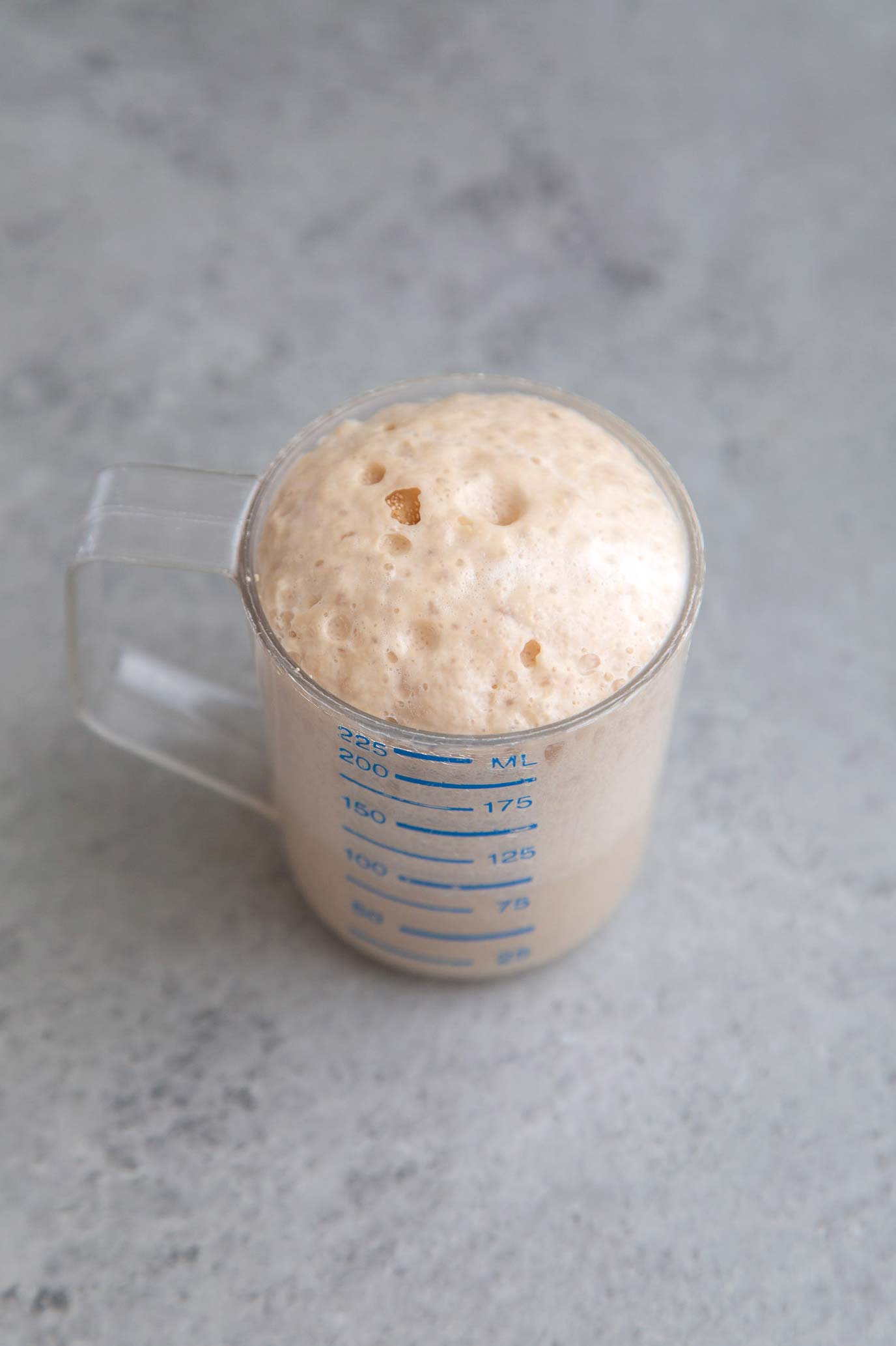
How does yeast work?
When yeast ferments, it breaks down sugars and converts it into alcohol and carbon dioxide. The production of carbon dioxide gas is what causes yeast breads to rise.
There are four main types of baker’s yeast
- Active Dry Yeast
- Instant Yeast
- Cake Yeast
- Wild Yeast
Active Dry Yeast is the most widely available yeast available on the market. It it primarily used by home bakers. Active dry yeast is sold as loose granules in envelope packets, jars, or bulk pouches.
Keep yeast at room temperature until package is opened. Once opened, the yeast should be stored in the fridge or freezer. Active dry yeast needs to be rehydrated in warm water, between 100-115 degrees F, before being added to dry ingredients.
Instant Yeast, also labeled as quick-rise yeast, is a version of active dry yeast that can be added directly to the dough ingredients. It does not require rehydration before use.
Cake Yeast or Fresh Yeast is sold in one pound foil-wrapped blocks. It has a short shelf life of two weeks and requires refrigeration at all times. Fresh yeast needs to be mixed with lukewarm water, about 70-80 degrees F.
Wild Yeast is the yeast that lives on fruit skin (such as grapes and apples), grains, and the surrounding air.
Wild yeast is cultivated through a starter or “sourdough starter.” This is made by combining water and flour. Sometimes fruit is added to jumpstart the process.
The wild yeast and bacteria in the flour, and air ferments to creates this homemade leavening agent.
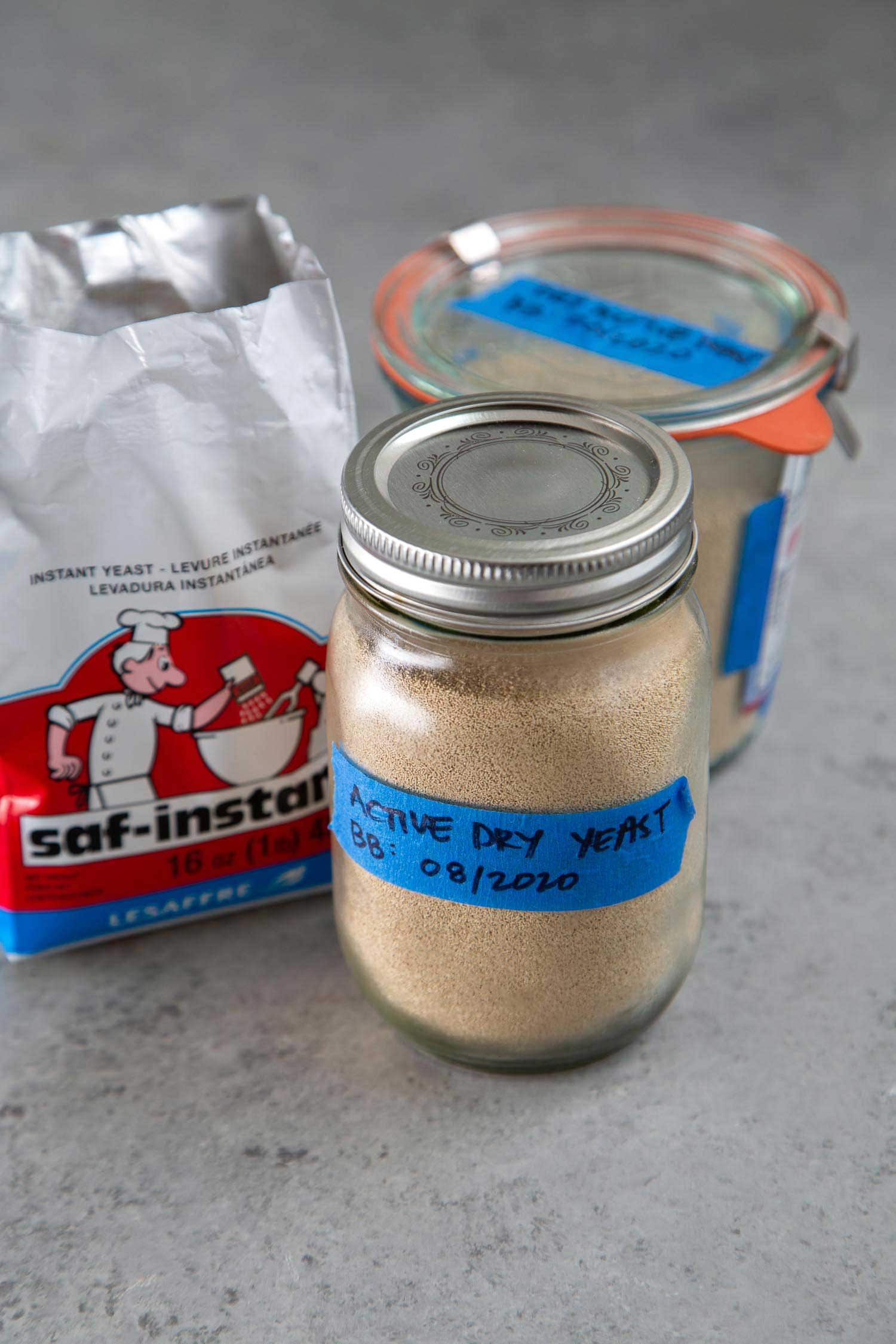
Buying Yeast
Yeast is found in the baking aisle of supermarkets alongside the flour and sugar. Active dry yeast and instant yeast is most commonly sold in a three pack strip. Each pack contains about 2 1/4 teaspoon of yeast.
Frequent bakers may purchase jars of yeast or even larger pouches.
Fresh yeast (also known as compressed yeast) is sold in small quantities in refrigerated section of well-stocker supermarkets. Restaurant supply stores and commercial kitchen distributors sell one pound blocks.
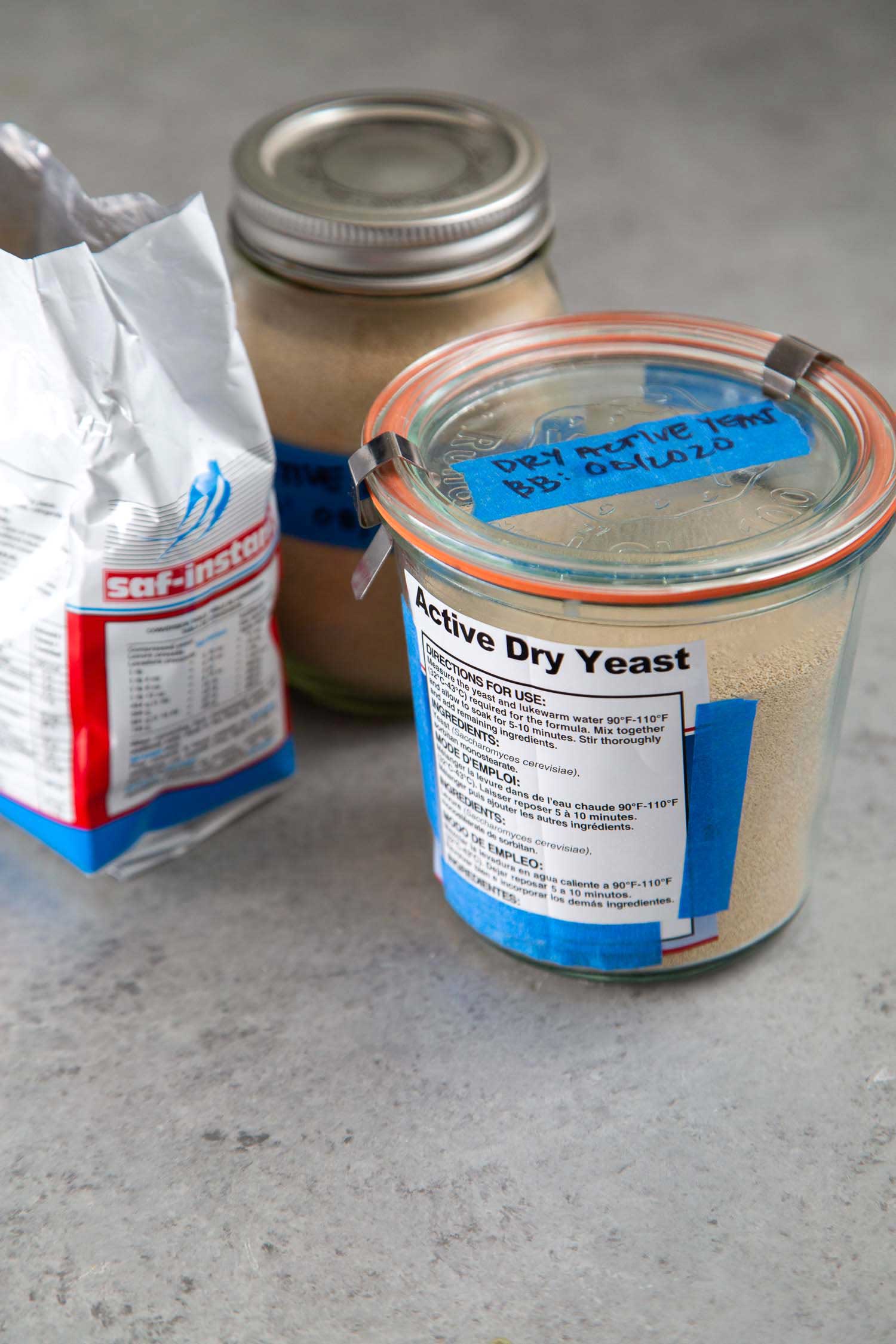
Storing Yeast. How long does yeast last in the fridge or freezer?
I purchase my active dry yeast in bulk (at Costco, Smart & Final, or Restaurant Depot). I divide the yeast into airtight containers like the jar photographed above.
The containers of yeast can be placed in the fridge for easy access. Or, keep the container in the freezer for longer storage.
Label jars with the “best by” or “best use” date listed on the yeast package. Do not use dry yeast past the expiration date.
Properly stored yeast should be good until it’s best by date.
Regardless of whether you store the yeast in the fridge or freezer, it can be used as is without having to bring the yeast to room temperature.
How to check if dry active yeast is still good?
To check if dry active yeast is still suitable for use, rehydrate 2 1/4 teaspoon dry yeast in 1/2 cup warm water (about 110 degrees F) with 1 teaspoon sugar. Stir to combine. Wait 7 minutes.
If the mixture does not bubble, foam, or smell like beer, it’s old. Throw it out and buy new yeast.

How to activate dry yeast?
Active dry yeast needs to be rehydrated in warm water, between 100-115 degrees F. Adding a teaspoon of granulated sugar helps to speed up the process by giving the yeast something to eat and convert into carbon dioxide gas.
Water hotter than 140 degrees F (60 degrees C) will kill the yeast and prevent the dough from rising. Water cooler than 100 degrees F will not properly “wake up” the yeast and will also prevent the dough from rising.
Use a digital kitchen thermometer to ensure the water is the correct temperature! I personally use this Thermoworks Thermapen. You can find other options on Amazon, Target, etc.

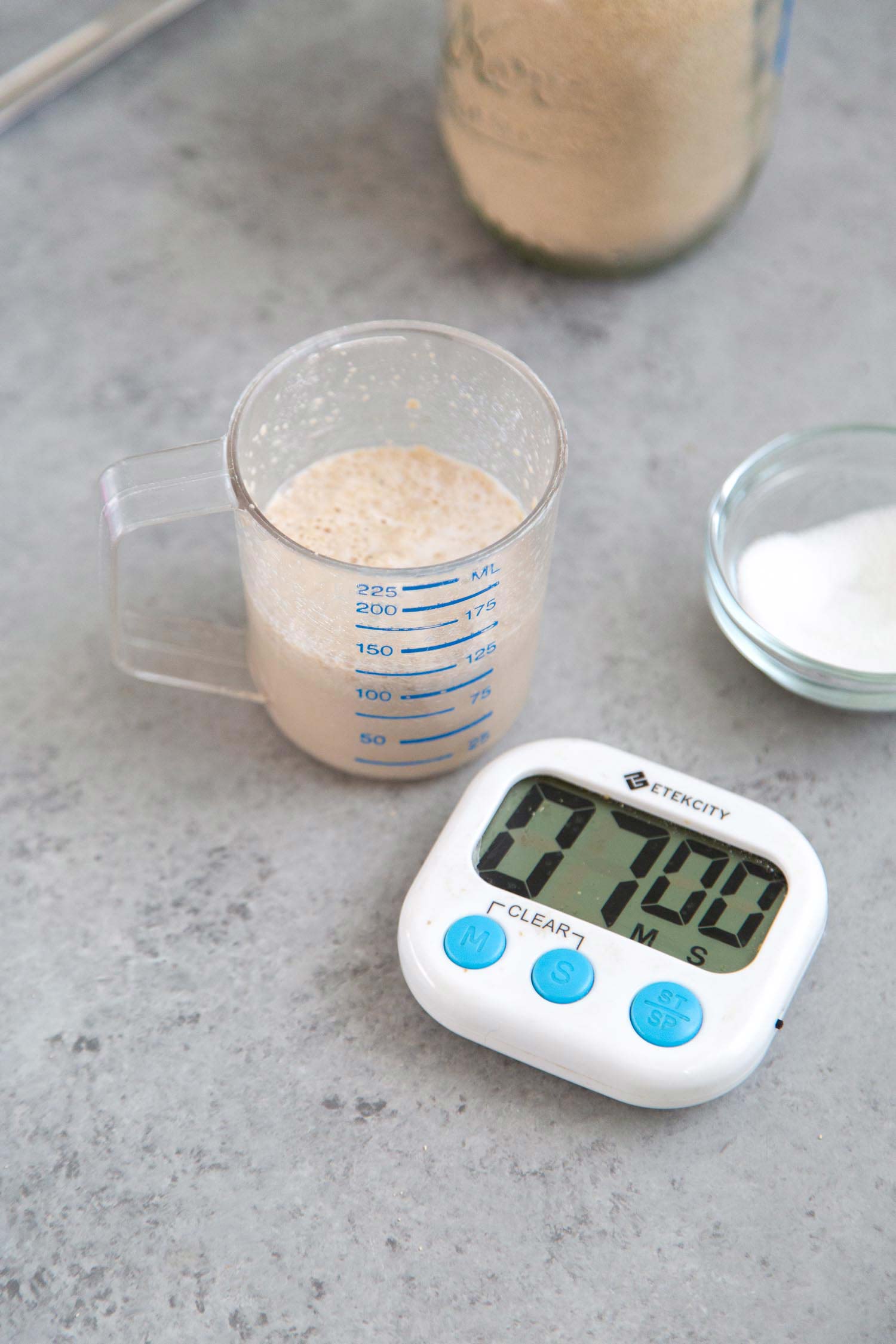
Mix together warm water, yeast, and optional sugar. Give the yeast five to seven minutes to wake up and activate.

Add mixture to remaining dough ingredients once it is foamy and smells like beer.
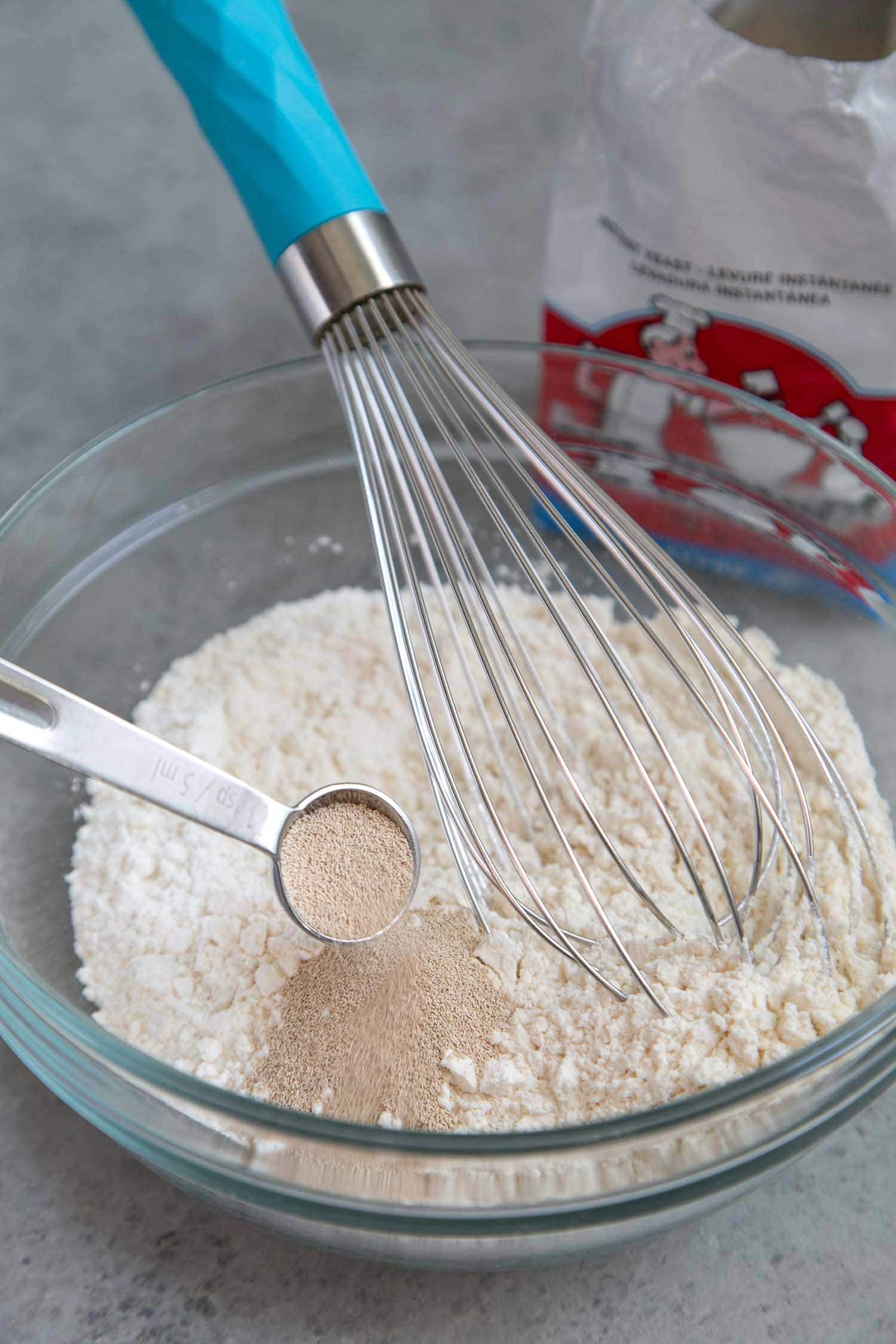
Can I substitute instant yeast for active dry yeast? And vice versa?
For home baking, you can use instant yeast and active dry yeast interchangeably 1 to 1. It only becomes an issue once you get to larger volume baking.
- To use instant yeast in place of dry active yeast, simply mix the instant yeast with the dry ingredients. The instant yeast does not need to be dissolved or activated in water ahead of time.
- To use active dry yeast in place of instant yeast, dissolve active dry yeast in warm water (preferably with 1/2 tsp to 1 tsp of granulated sugar) for 5 to 7 minutes until foamy and fragrant.
Keep in mind, active dry yeast takes longer to rise and proof. This slower rise allows the dough to produce and develop more flavor. As such, it active dry my preferred yeast.
Where should dough rest or proof?
Yeast likes warm, humid environments. Commercial bakers often use proof boxes to ensure their dough can rise at the optimal temperature and humidity.
For home use, I suggest finding the warmest place in the house. That varies from house to house. Perhaps it’s the garage, over the microwave, next to the refrigerator, or next to the television.
Yeasted dough rise best at a room temperature of 75 degrees F.
What should you bake first?
With this better understanding and grasp of yeast, I suggest starting with something simple like pumpkin sandwich bread or bacon parmesan walnut bread.
This no-knead bread is also great for bread newbies!

